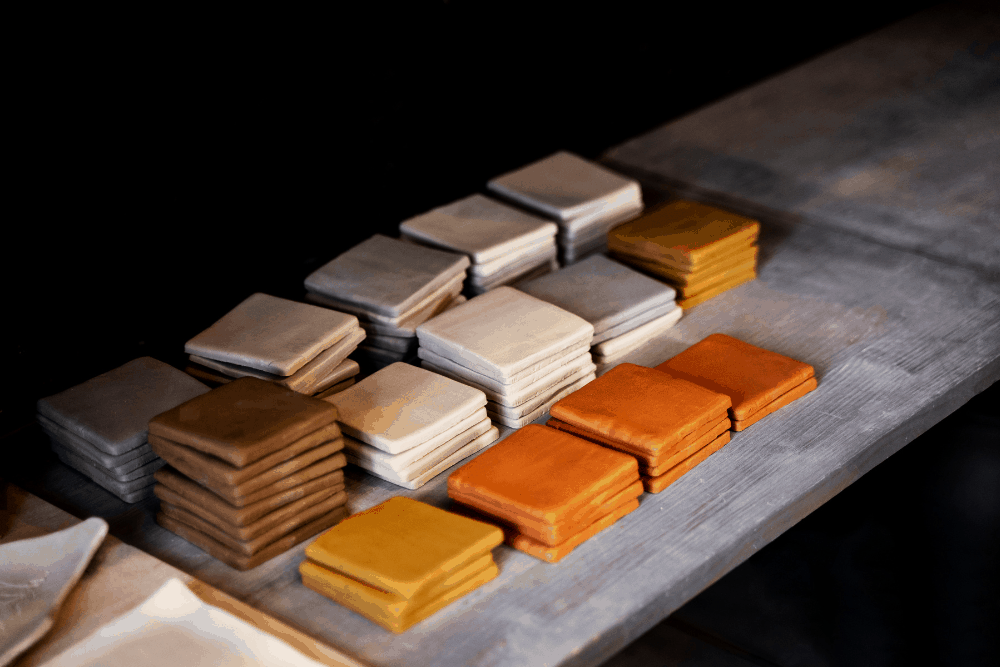
Choosing the right flooring material for your home is one of the most important decisions in any renovation or construction project. Two of the most popular options that homeowners consistently consider are ceramic and porcelain tiles, both offering unique benefits for different spaces and applications. Understanding the distinctions between these materials will help you make an informed decision that aligns with your specific needs, budget, and long-term goals. Professional installation ensures that whichever option you choose will perform optimally for years to come, making it essential to work with experienced professionals who understand the nuances of each material type from Bay Tile
Understanding the Difference Between Porcelain and Ceramic Tiles
Both materials belong to the ceramic family, yet their unique manufacturing processes and composition create distinct performance characteristics that significantly impact their suitability for different applications in your home.
What Makes Porcelain and Ceramic Tiles Unique?
Both porcelain and ceramic tiles belong to the ceramic family, yet they possess distinct characteristics that set them apart. Many homeowners wonder if ceramic and porcelain are the same, and the answer is more nuanced than a simple yes or no. While both materials are made from clay and other natural materials, their composition and manufacturing processes create significant differences in performance, durability, and application suitability. Bay Tile’s expert installers understand these distinctions and can guide you toward the perfect choice for each area of your home.
Key Differences in Composition and Manufacturing
The fundamental difference between porcelain and ceramic lies in the clay composition and firing process. Porcelain tiles are crafted from refined clay with fewer impurities and fired at higher temperatures, typically exceeding 2,200 degrees Fahrenheit. This intense heat creates a denser, less porous material with exceptional strength and water resistance. Ceramic tiles, while still durable, are fired at lower temperatures and contain more porous clay, resulting in a material that’s easier to cut and install but slightly more absorbent.
Durability: Which Tile Lasts Longer?
When evaluating long-term performance, porcelain typically edges ahead due to its density and lower water absorption rate. This makes it particularly suitable for areas exposed to moisture, temperature fluctuations, and heavy foot traffic. Ceramic tiles, however, offer excellent durability for most residential applications and can last decades with proper care and maintenance. Bay Tile’s professional installation techniques maximize the lifespan of both tile types through proper substrate preparation and sealing methods.
Porcelain vs Ceramic Tile for Showers: Which Is Best?

Bathroom and shower applications present unique challenges that require careful material selection based on moisture resistance, maintenance requirements, and long-term performance in wet environments.
Why Porcelain Tiles Are a Great Option for Showers
When considering porcelain vs ceramic tile for shower</a> installations, porcelain often emerges as the preferred choice due to its minimal water absorption properties. The dense structure prevents moisture from penetrating the tile surface, reducing the risk of mold, mildew, and structural damage over time. Additionally, porcelain’s resistance to staining and ease of cleaning make it ideal for wet environments where hygiene is paramount. Bay Tile specializes in waterproof shower installations that maximize these benefits through proper waterproofing techniques.
Ceramic Tiles: Pros and Cons for Shower Use
Ceramic tiles can certainly be used in shower applications, especially when properly sealed and installed with appropriate waterproofing measures. They offer cost savings and easier cutting for complex layouts, making them attractive for budget-conscious homeowners. However, their slightly higher porosity requires more attention to sealing and maintenance in moisture-rich environments.
Which Tile is Better for Your Home: Porcelain or Ceramic?
The optimal choice depends on multiple factors including budget, intended use, aesthetic preferences, and long-term maintenance considerations that vary significantly between different areas of your home.
Comparing the Cost: Porcelain vs Ceramic Tiles
Budget considerations play a crucial role in tile selection. Ceramic tiles typically cost less upfront, making them accessible for larger projects or when working within tight budget constraints. Porcelain tiles command a higher initial investment but often provide better value over time due to their enhanced durability and lower maintenance requirements. Bay Tile offers transparent pricing and can help you find the perfect balance between cost and performance for your specific project.
Aesthetic Appeal: Which Tile Looks Better in Your Space?
Both materials offer extensive design possibilities, with modern manufacturing techniques creating stunning visual options in each category. Ceramic tiles excel in traditional applications and offer vibrant glazing options, while porcelain tiles can convincingly replicate natural stone, wood, and fabric textures through advanced printing technologies.
Performance: Which Tile Holds Up Over Time?
Long-term performance depends largely on application and environment. Understanding what is the difference between porcelain and ceramic in terms of performance helps homeowners set realistic expectations. Porcelain consistently performs well in demanding conditions, while ceramic excels in standard residential applications with moderate traffic and moisture exposure.
Maintenance and Care: Which Tile is Easier to Maintain?
Both materials are relatively low-maintenance compared to natural stone or hardwood flooring. Porcelain’s non-porous surface resists staining and requires minimal sealing, while ceramic tiles may need periodic sealing depending on the glaze and application area. Bay Tile provides comprehensive maintenance guidance to ensure your investment continues looking beautiful for years to come.
Factors to Consider When Choosing Between Porcelain and Ceramic
Making an informed decision requires evaluating multiple factors that impact both immediate satisfaction and long-term performance, including traffic patterns, climate conditions, and specific room requirements.
The Right Tile for High-Traffic Areas
Areas experiencing heavy foot traffic benefit from porcelain’s exceptional strength and wear resistance. Entryways, kitchens, and commercial spaces typically see better long-term results with porcelain installations, while ceramic works wonderfully in bedrooms, bathrooms, and other moderate-use areas.
Budget Considerations: Is Porcelain Worth the Extra Cost?
The decision often comes down to balancing upfront costs with long-term value. When evaluating which is better porcelain or ceramic tile for your specific situation, consider factors like expected lifespan, maintenance costs, and replacement frequency to determine true lifetime value. Bay Tile’s experienced team can help you calculate the total cost of ownership for both options.
Climate and Installation Factors
Regional climate conditions influence tile performance, with porcelain offering better freeze-thaw resistance in harsh climates. Installation complexity and subfloor conditions also impact material selection, as ceramic’s workability can simplify complex cuts and installations. Bay Tile’s expertise ensures proper installation regardless of which material you choose.
Ready to Choose the Best Tile for Your Home? Contact Our Experts Today!

Making the right choice between porcelain and ceramic tiles requires careful consideration of your specific needs, budget, and long-term goals. Bay Tile’s experienced team can help you evaluate these factors and select the perfect material for your project, ensuring professional installation that maximizes performance and longevity. The porcelain vs ceramic debate doesn’t have to be overwhelming when you have knowledgeable professionals guiding your decision-making process and executing flawless installations that stand the test of time.
